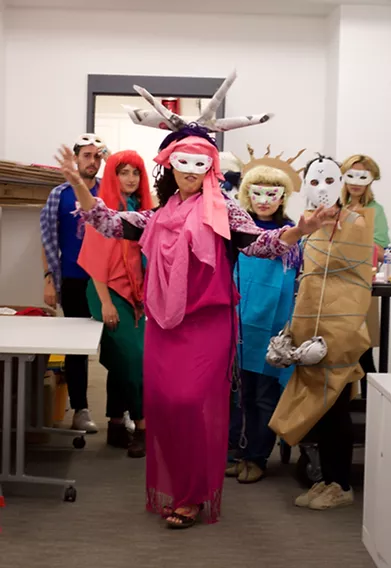Literacy supports all areas of development (economic, social, emotional, cognitive, vocational, etc.). While the number of readers has grown worldwide,reading comprehension stays alarmingly low because students need to use texts in order to understand them.
With Pre-Texts, students master texts by using them to create visual and performative arts. Simple yet rigorous, Pre-Texts adapts to any curriculum and cultural taste.
“Make art with this text and reflect on the process” is the prompt that activates cognitive, creative and emotional development for groups of participants.
